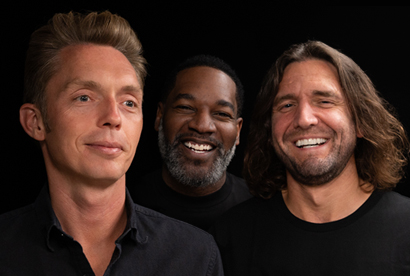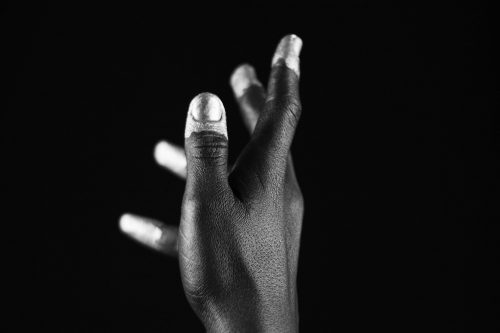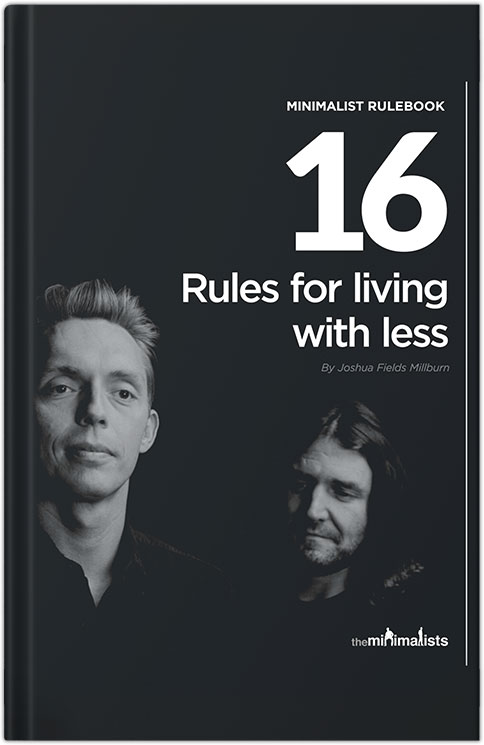My mother died in 2009. She lived a thousand miles away, and it was my responsibility to vacate her apartment in Florida. It was a small, one-bedroom place, but it was packed wall-to-wall with her belongings. Mom had great taste (she could have been an interior designer), and none of her stuff was junk. Nevertheless, there was a lot of stuff in her home.
Mom was constantly shopping, always accumulating more stuff: She had antique furniture throughout her apartment, a stunning oak canopy bed that consumed almost her entire bedroom, two closets jam-packed with clothes, picture frames standing on every flat surface, original artwork adorning the walls, and tasteful decorations in every nook, cranny, and crevasse. There was 64 years of accumulation in that tiny apartment.
So I did what any son would do: I rented a large truck from U-Haul. Then I called a storage place back in Ohio to make sure they had a storage unit that was big enough. The truck was $1600, the storage facility was $120—financially I could afford it, but I quickly discovered the emotional cost was much higher.
Initially, I didn’t want to let go of anything. If you’ve ever lost a parent, a loved one, or been through a similarly emotional time, then you understand exactly how hard it was for me to let go of any of those possessions. So instead of letting go, I wanted to cram every trinket, figurine, and piece of oversized furniture into that storage locker in Ohio, floor to ceiling. That way I knew that Mom’s stuff was there if I ever wanted it, if I ever needed access to it for some incomprehensible reason. I even planned to put a few pieces of Mom’s furniture in my home as subtle reminders of her.
I started boxing up her belongings: every picture frame, every porcelain doll, and every white doily on every shelf. I packed every bit of her that remained.
Or so I thought.
I looked under her bed. Among the organized chaos that comprised the crawlspace beneath her bed, there were four boxes, each labeled with a number. Each numbered box was sealed with packing tape. I cut through the tape, and when I folded back the boxes’ flaps I discovered old papers from my elementary school days from nearly a quarter-century ago: spelling tests, cursive writing lessons, artwork—it was all there, every shred of paper from my first four years of school. She obviously hadn’t accessed the sealed boxes in years, yet Mom had held on to these things because she was trying to hold on to pieces of me, pieces of the past—much like I was attempting to hold on to pieces of her and her past.
I realized my retention efforts were futile: I could hold on to her memories without her stuff, just as she had always remembered me, my childhood, and all our memories without ever accessing those sealed boxes under her bed. She didn’t need papers from 25 years ago to remember me, just as I didn’t need a storage locker filled with her stuff to remember her.
I called U-Haul and canceled the truck. And then, over the next twelve days, I donated her stuff to places and people who could use it.
Of course it was difficult to let go, but I realized many things about our relationship between memories and possessions during the experience:
I am not my stuff; we are more than our possessions.
Our memories are within us, not within our things.
Holding on to stuff imprisons us; letting go is freeing.
You can take pictures of items you want to remember.
Old photographs can be scanned.
An item that is sentimental for us can be useful for someone else.
I don’t think sentimental items are bad, or evil, or that holding on to them is wrong; I think the danger of sentimental items (and sentimentality in general) is far more subtle. If you want to get rid of an item, but the only reason you are holding on to it is for sentimental reasons—and if it is weighing on you—then perhaps it’s time to get rid of it, perhaps it’s time to free yourself of the weight. That doesn’t mean you must get rid of everything, though.
When I returned to Ohio, I had four boxes of Mom’s photographs in my trunk, which I would later scan and save online. I found a scanner that made scanning the photos easy. Those photos are digital now, and they can be used in digital picture frames instead of collecting dust in a basement. I no longer have the clutter of their boxes lying around and weighing me down, and they can never be destroyed in a fire.
I donated everything else strewn throughout her home: her furniture, her clothes, and her decorative items. It was a giant leap for me, but I felt I must do it to remove the weight—the emotional gravitas—of the situation from my shoulders. I don’t need Mom’s stuff to remind me of her—there are traces of her everywhere: in the way I act, in the way I treat others, even in the way I smile. She’s still there, and she was never part of her stuff.
Whenever I give advice on paring down, I tend to offer two options:
The first option is usually the Giant Leap option, the dive-in-head-first option: get rid of everything, smash your TV, throw out all your stuff, quickly rip off the Band-Aid, let it go! This option isn’t for everyone (and it’s often not for me), but in the case of my mom’s stuff, this is exactly what I did.
The second option is to take Baby Steps, which works because it helps you build momentum by taking small, incremental actions. What sentimental item can you get rid of today that you’ve wanted to get rid of for a while? Start there. Then pick a few things each day, gradually increasing your efforts as you feel more comfortable.
Whichever option you choose, take action: never leave the scene of a good idea without taking action.
Read this essay and 150 others in our book, Essential.
You May Also Enjoy
How to Start a Successful Blog TodayLearn how to start a blog in less than an hour. Follow the step-by-step instructions we used when starting our blog, which now has reached more than 20 million people. Creating this blog is one of the best decisions Ryan and I ever made. After all, our blog is how we earn a living. More important, it's how we add value to other people's lives. Read more
30-Day Minimalism GameLet's play a simple game together. We call it the 30-Day Minimalism Game. Find a friend, family member, or coworker who's willing to minimize their stuff with you next month. Read more
11 Ways to Write BetterWe are all writers now. Whether you write books, blog posts, emails, Instagram captions, or text messages, you are a writer. No matter your preferred medium, here are a few tips to help you write more effectively. Read more


